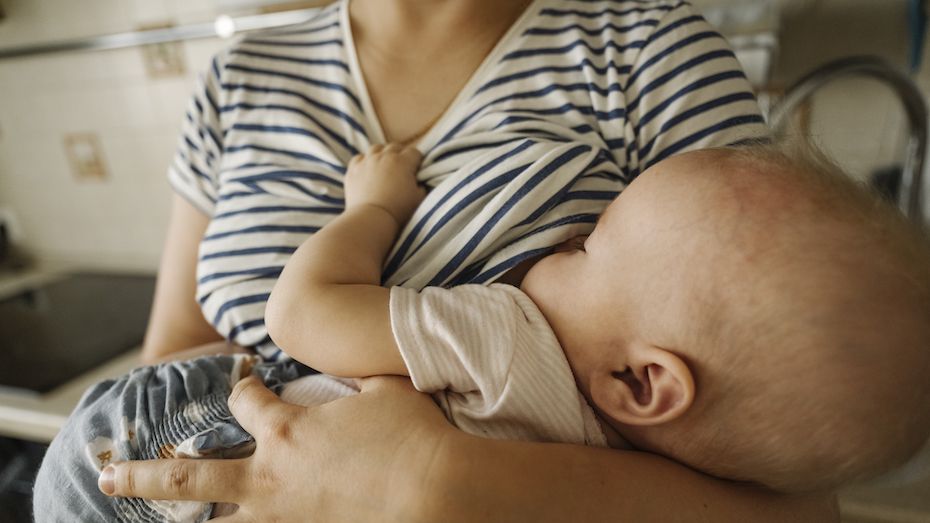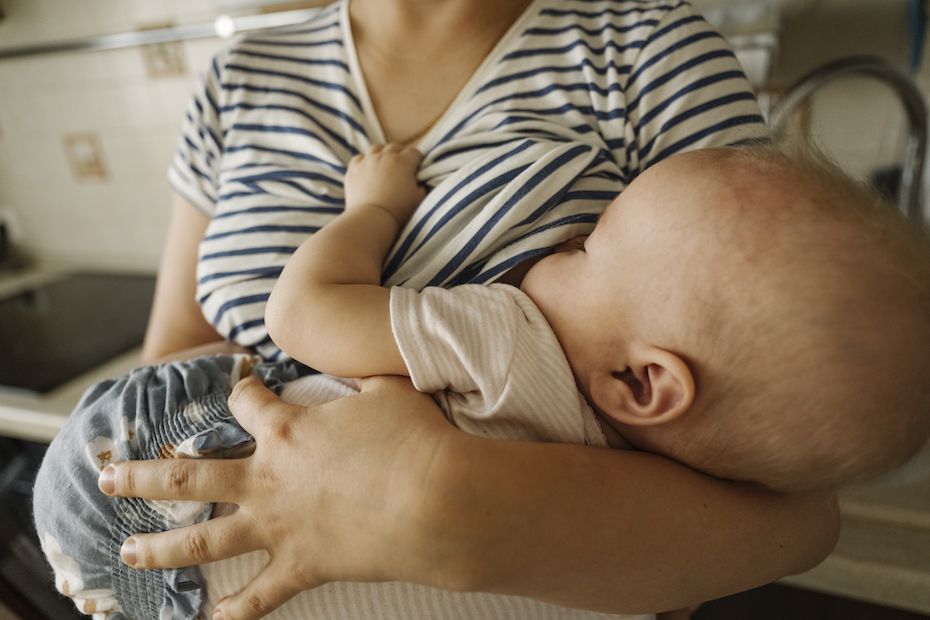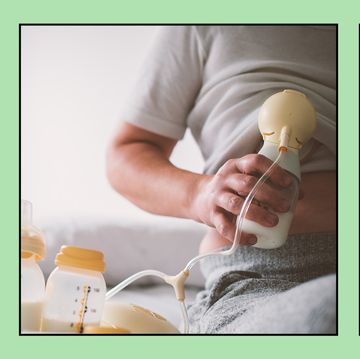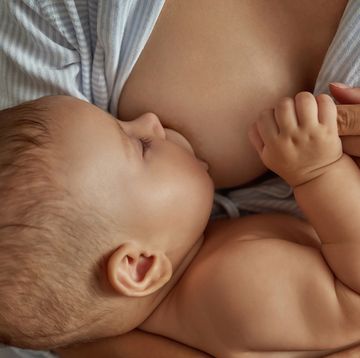Two mums in a same-sex relationship will both be able to breastfeed their baby despite only one of them having been pregnant.
Taking to Instagram to share the exciting development in their journey to parenthood, influencers Caitlin Bridget and Leah Sheil (who run a joint TikTok account with the username @caitlinandleahh) revealed that they'll both have the option to breastfeed when their baby is born, thanks to medicine prescribed by a breastfeeding expert.
"Today I had my first consultation with a lactation specialist and I'm going to be inducing lactation," Caitlin said. "I'm going to be tricking my body into thinking I was pregnant by taking the pill, but I will also be taking a med that induces lactation."
As for when she'll start taking the medicine, Caitlin explained that this'll need to happen six weeks before Leah gives birth. "I will be pumping every three hours including at nighttime," she added. "Fingers crossed that we are both able to breastfeed."
Unsurprisingly, the comments section under the clip was bursting with positive messages and congratulations for the couple. "That’s actually genius! Breastfeeding is super hard work and all on one person (usually) so this would be amazing!" one person commented, with another writing: "That's so cool, I never knew you could do that! I thought you actually had to be pregnant."
Amongst the praise, there were also questions about how inducing lactation actually works, so we got in touch with Dr Deborah Lee, a GP at Dr Fox Online Pharmacy, to find out more.
When you’re pregnant, how does your body know when to start producing milk?
Before we get into exploring how someone could produce milk without being pregnant, let's first understand how the process works for those who have carried their baby. "Lactation begins in the second trimester of pregnancy – this is weeks 13 to 26," Dr Lee tells us.
"It is initiated by the natural rise in oestrogen and progesterone levels that occur due to the pregnancy," she adds. "High concentrations of oestrogen and progesterone stimulate the mammary glands (breasts) to enlarge and develop, ready for milk production to occur after childbirth has taken place."
As for how that all works, Dr Lee explains that each breast contains tiny sacs (alveoli), which connect through a network of tubules (ducts) – these "ducts eventually all join up so that breastmilk can pass out of each nipple during suckling."
"A hormone called prolactin targets the alveoli, and in due course, causes them to extract nutrients from the maternal blood circulation and incorporate these into breast milk," the expert notes, adding that milk isn't produced during pregnancy because the high levels of oestrogen and progesterone continually inhibit milk production.
However, "after the delivery, oestrogen and progesterone levels naturally fall, and breast milk production gets underway."
"The physical action of the baby suckling at the nipple causes sensory impulses which are detected in the mother’s brain," she adds, "causing more prolactin to be produced, and further stimulating milk production."
Is it possible to breastfeed if you're not pregnant?
"Induced lactation is entirely possible for non-biological mothers – that is mothers who have never been or are not currently pregnant," Dr Lee explains. "It has been documented in mothers of adopted infants, non-biological mothers and more recently in transgender women."
Is milk from induced lactation as good as naturally-produced breastmilk?
"Lactogenesis – the process of human breastmilk production – is the same process," Dr Lee tells us, "whether this occurs as the result of induced lactation, or naturally from a pregnancy."
"Human milk contains the perfect amounts of protein, fat, vitamins and minerals, for the health, growth and development of a new baby," the expert adds. "The first milk a new baby suckles is called colostrum, which is thick, yellowish in colour, and especially rich in protein, vitamins and antibodies."
What are the benefits of inducing lactation?
"Breastfeeding has many well-established advantages for mother and baby," Dr Lee points out. "Not only is breastmilk the perfect form of nutrition for a new baby, but both mother and baby also benefit from close skin-to-skin contact and enhanced emotional bonding."
Are there any downsides to inducing lactation?
"Women who have participated in induced lactation describe both positive and negative emotions," Dr Lee notes. "Overall, they have found it a pleasurable experience, that helped them develop a maternal bond with their baby," she said, adding that: "Those who have had previous infertility found it helped them deal with their grief."
But, there are downsides too. "The negative aspects revolved around finding the time to do all the breast pumping that was required and irritation with various issues regarding the use of breast pumps," Dr Lee says. "Breastfeeding can be tiring and it also comes with the risk of sore nipples, cracked nipples, thrush, mastitis and breast abscesses."
This article is not intended to be a substitute for professional medical advice or diagnosis. Always seek the advice of your physician or other qualified health provider with any questions you may have regarding a medical condition.













